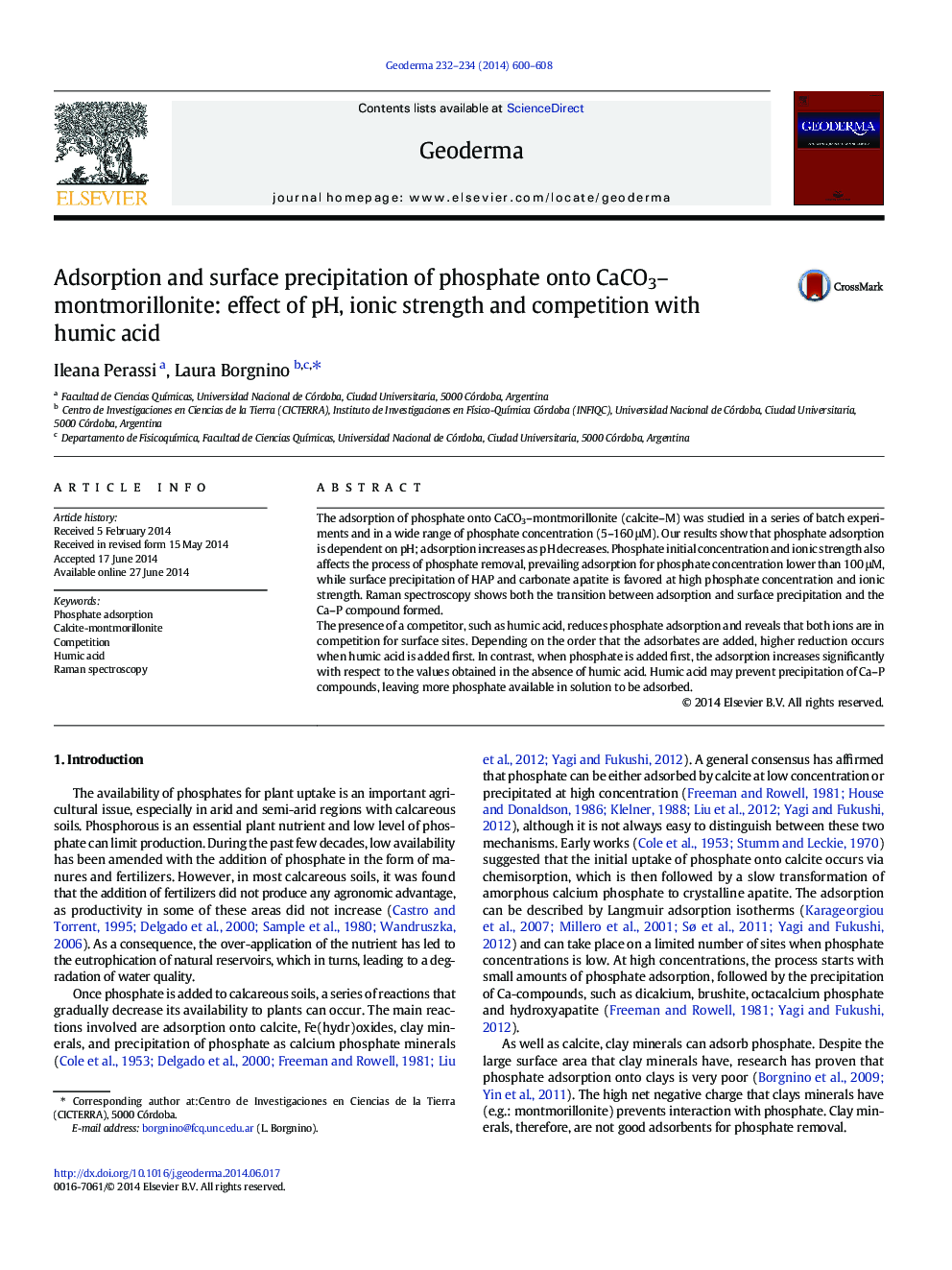| Article ID | Journal | Published Year | Pages | File Type |
|---|---|---|---|---|
| 6408788 | Geoderma | 2014 | 9 Pages |
â¢Phosphate adsorption onto CaCO3-montmorillonite depends on pH and ionic strength.â¢Removal mechanism depends on the initial phosphate concentration and ionic strength.â¢Adsorption is favored by low ionic strength and phosphate concentration.â¢Surface precipitation is favored for high phosphate concentration and ionic strength.â¢Humic acid affects the phosphate adsorption capacity.
The adsorption of phosphate onto CaCO3-montmorillonite (calcite-M) was studied in a series of batch experiments and in a wide range of phosphate concentration (5-160 μM). Our results show that phosphate adsorption is dependent on pH; adsorption increases as pH decreases. Phosphate initial concentration and ionic strength also affects the process of phosphate removal, prevailing adsorption for phosphate concentration lower than 100 μM, while surface precipitation of HAP and carbonate apatite is favored at high phosphate concentration and ionic strength. Raman spectroscopy shows both the transition between adsorption and surface precipitation and the Ca-P compound formed.The presence of a competitor, such as humic acid, reduces phosphate adsorption and reveals that both ions are in competition for surface sites. Depending on the order that the adsorbates are added, higher reduction occurs when humic acid is added first. In contrast, when phosphate is added first, the adsorption increases significantly with respect to the values obtained in the absence of humic acid. Humic acid may prevent precipitation of Ca-P compounds, leaving more phosphate available in solution to be adsorbed.
